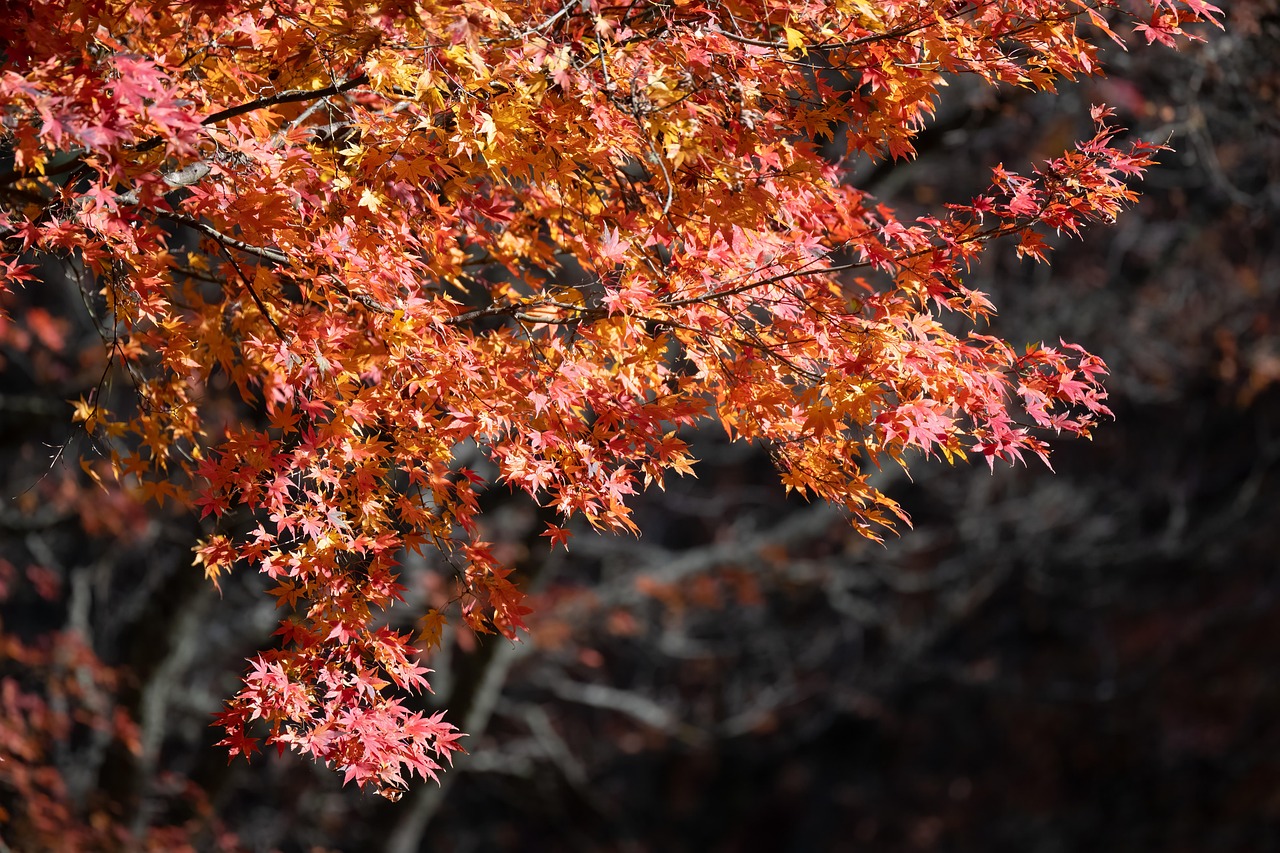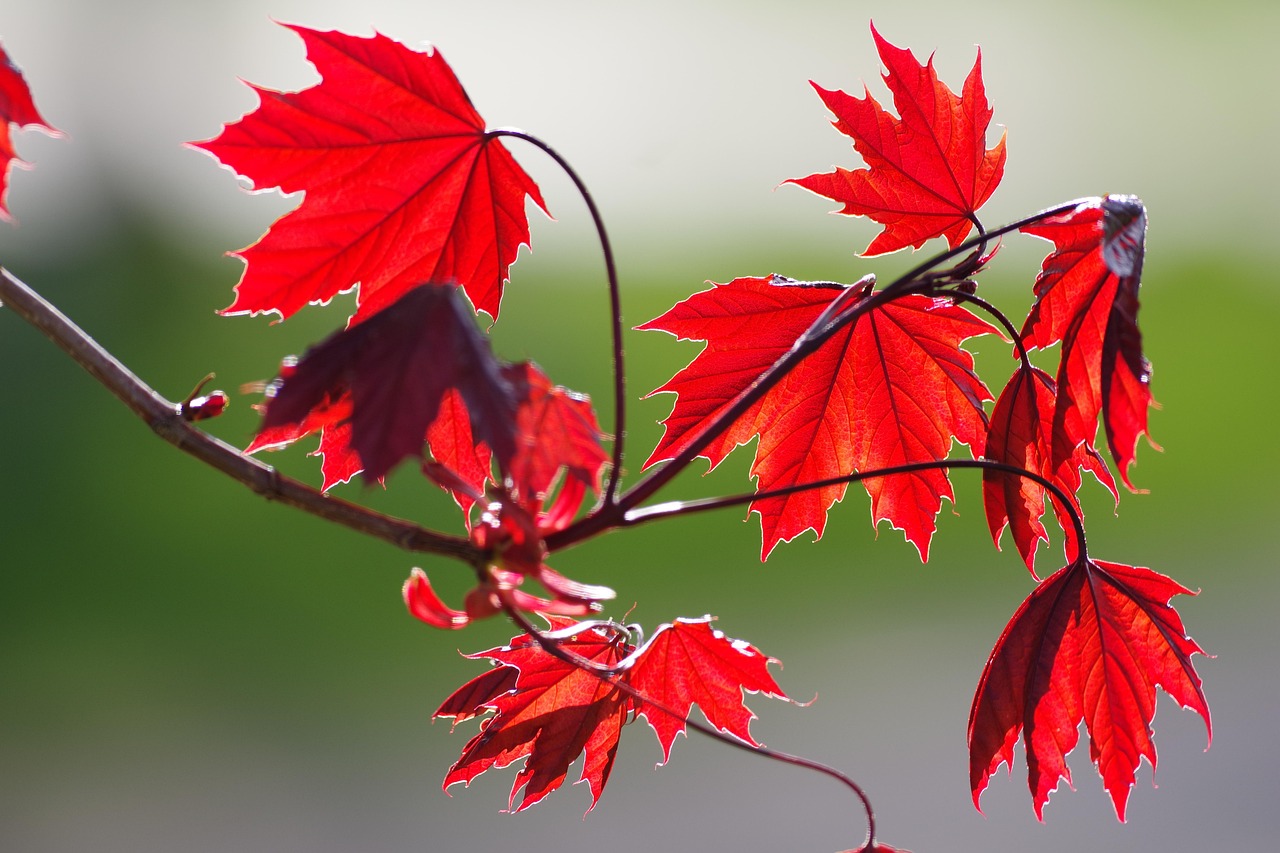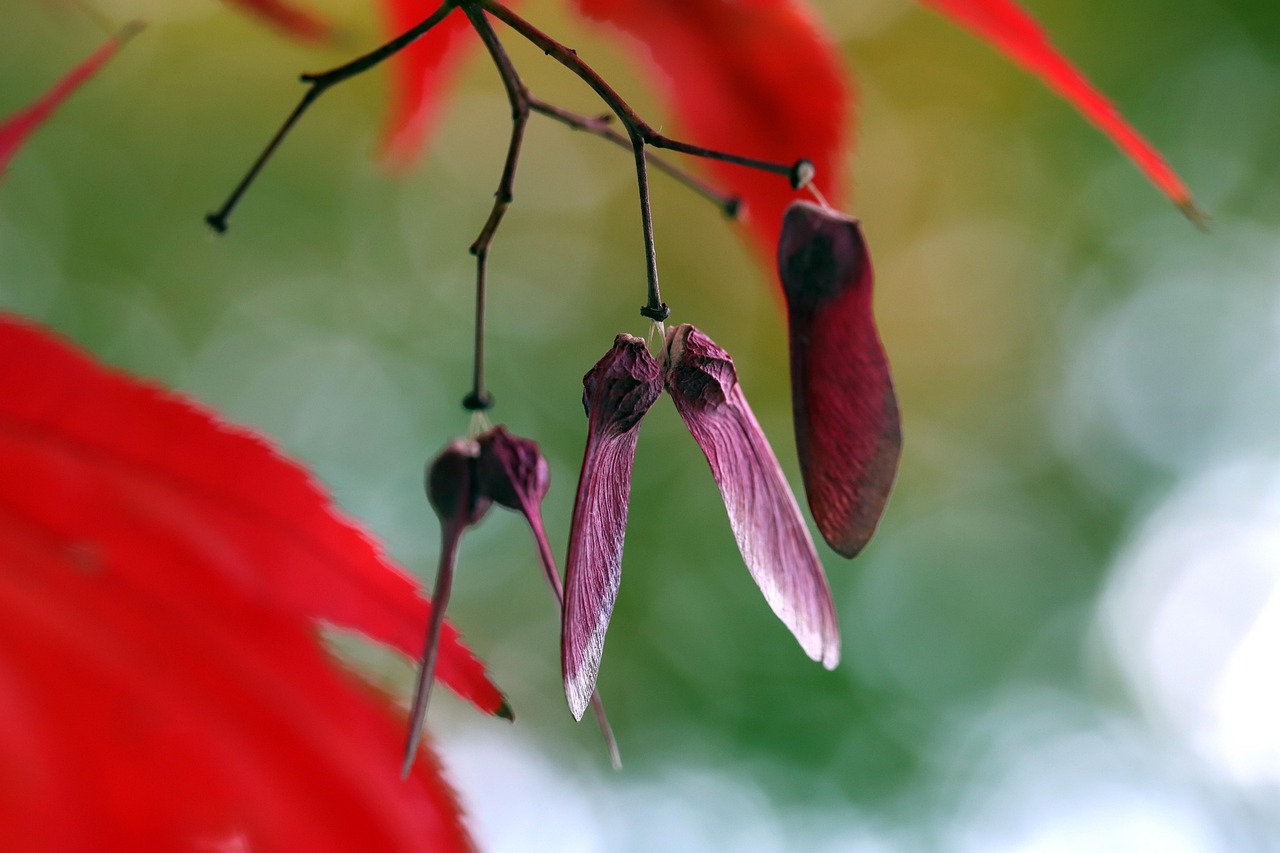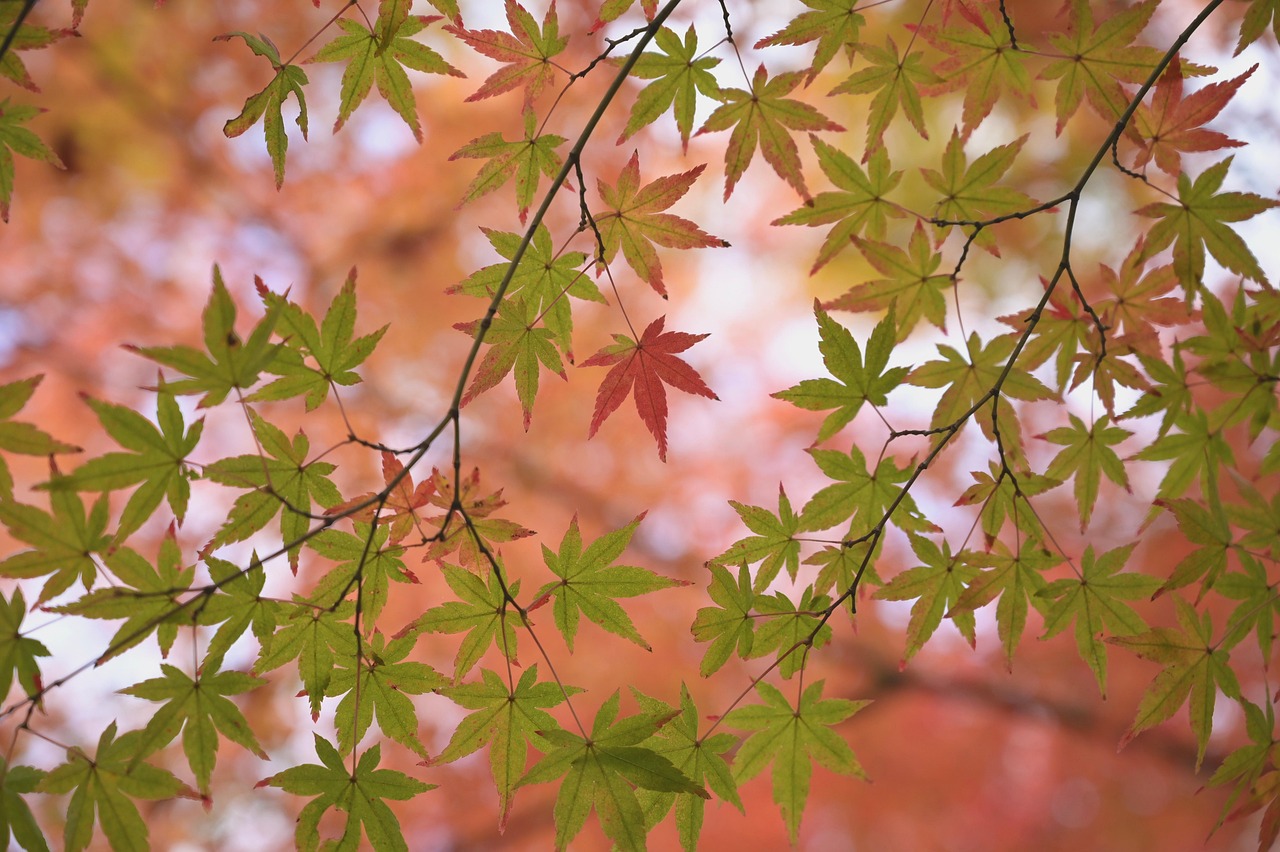Red maple trees can grow in Florida, particularly in the northern regions. However, their adaptability to the warm climate varies. While they can thrive in some areas, extreme heat and humidity may pose challenges to their growth.
Understanding Red Maple Trees

The red maple, known scientifically as Acer rubrum, is a versatile and fast-growing deciduous tree native to eastern North America. Characterized by its vibrant red foliage in the fall and beautiful flowers in early spring, it is a popular choice for landscaping. Red maples can reach heights of 40 to 60 feet, making them suitable for various environments.
These trees are known for their adaptability to different soil types and moisture levels. They typically grow in wetlands, swamps, and along rivers, but can also flourish in upland areas. This ability to thrive in diverse conditions contributes to their widespread popularity.
Climate Considerations in Florida
Florida’s climate is predominantly humid subtropical, with warm temperatures year-round. The state experiences hot summers and mild winters, which can be a double-edged sword for certain tree species. While red maples can tolerate some heat, they prefer areas with cooler temperatures during the growing season.
In northern Florida, where temperatures are more moderate, red maples have a higher chance of thriving. However, as one moves southward into the state’s hotter regions, the viability of these trees diminishes. Understanding local climate conditions is essential for successful planting and growth.
Factors Affecting Growth in Warm Climates
Several factors influence the growth of red maple trees in Florida’s warm climate. These include soil type, moisture availability, and temperature extremes. Each of these factors plays a significant role in determining whether red maples can successfully establish themselves in a given area.
Soil Type
Red maples prefer well-drained soils that are rich in organic matter. They thrive in loamy soils but can adapt to sandy or clayey soils as long as they are not waterlogged. In Florida, soil types vary widely across regions:
| Soil Type | Description |
|---|---|
| Sandy Soil | Well-drained but low in nutrients; may require amendments for successful growth. |
| Clay Soil | Heavy and compacted; can retain moisture but may cause root rot if drainage is inadequate. |
| Loamy Soil | Ideal for red maples; retains moisture while providing good drainage and nutrients. |
Moisture Availability
Moisture is crucial for red maples. These trees naturally grow near water sources and require consistent soil moisture to thrive. In Florida, rainfall patterns can vary significantly. During dry spells, adequate watering is essential to prevent stress on the trees.
When planting red maples in Florida, consider the following:
- Choose planting sites near water sources or where irrigation is feasible.
- Monitor soil moisture regularly, especially during the dry season.
- Avoid overwatering, which can lead to root rot.
Temperature Extremes
While red maple trees are hardy, they are sensitive to extreme heat. In Florida’s southern regions, summer temperatures often exceed 90°F, making it challenging for these trees to thrive. Additionally, high humidity levels can lead to fungal diseases that affect their health.
To mitigate temperature-related stress, consider the following strategies:
- Select planting locations with partial shade during the hottest parts of the day.
- Use mulch around the base of the tree to retain soil moisture and regulate temperature.
- Monitor for signs of heat stress, such as wilting leaves or leaf scorch.
Conclusion of Factors Affecting Growth
Understanding the unique growing conditions in Florida is essential for successfully cultivating red maple trees. By considering soil type, moisture availability, and temperature extremes, you can increase the likelihood of healthy growth and development for these beautiful trees in a warm climate.
Planting Red Maple Trees in Florida
When considering the cultivation of red maple trees in Florida, proper planting techniques are crucial for ensuring their successful establishment. The right timing, location, and care during the initial growth phase can significantly impact the long-term health of the trees.
Ideal Planting Time
The best time to plant red maple trees in Florida is during the fall or early spring. These seasons provide optimal conditions for root development before the heat of summer sets in. Planting during these times allows trees to acclimate to their new environment.
- Fall Planting: This is typically the most favorable time. The cooler temperatures and increased rainfall help establish roots.
- Spring Planting: Planting in early spring also works, but it is essential to ensure that the trees receive adequate water as temperatures rise.
Choosing the Right Location
Selecting the appropriate location for red maple trees is vital for their growth and overall health. Consider the following factors when choosing a planting site:
- Sunlight: Red maples prefer full sun to partial shade. Aim for at least six hours of sunlight daily to promote healthy growth.
- Soil Drainage: Ensure the site has well-draining soil. Avoid low areas where water may accumulate after heavy rainfall.
- Space: Allow ample space for the tree to grow. Red maples can spread 25 to 35 feet wide. Consider nearby structures or other plants when selecting a location.
Preparing the Soil
Before planting, soil preparation is essential for healthy root development. Follow these steps to enhance soil quality:
- Test Soil pH: Red maples thrive in slightly acidic to neutral soil (pH 5.5 to 7.0). Conduct a soil test to determine pH levels.
- Add Organic Matter: Incorporate compost or well-rotted manure into the planting hole. This addition improves soil nutrients and structure.
- Till the Soil: Loosen the soil in the planting area to facilitate root growth. Tilling helps break up compacted soil and encourages aeration.
Watering and Maintenance
After planting, proper watering and maintenance are crucial for red maple trees, especially during their first few years. Here are some essential practices:
Watering Practices
Newly planted red maples require consistent moisture to establish strong roots. Here are tips for effective watering:
- Initial Watering: Water thoroughly immediately after planting to settle the soil around the roots.
- Regular Watering: During dry spells, water weekly, ensuring that moisture penetrates several inches into the soil.
- Avoid Overwatering: Allow the top inch of soil to dry out between watering sessions to prevent root rot.
Mulching and Fertilization
Applying mulch and fertilizer can significantly benefit red maple trees. Consider the following guidelines:
- Mulch Application: Spread a 2- to 4-inch layer of organic mulch around the base of the tree, keeping it away from the trunk. Mulch helps retain moisture and suppress weeds.
- Fertilization: Fertilize in early spring with a slow-release fertilizer designed for trees. Follow package instructions regarding application rates.
Pest and Disease Management
Red maples can be susceptible to various pests and diseases, particularly in warm climates. Regular monitoring is essential for early detection and management:
- Pests: Common pests include aphids, scale insects, and leafcutter bees. Use insecticidal soap or neem oil for control if needed.
- Diseases: Fungal infections like leaf spot and root rot can occur in humid conditions. Ensure good air circulation and avoid overhead watering to minimize risks.
Caring for Established Red Maple Trees
Once red maple trees are established, they require ongoing care to remain healthy and vibrant. Regular maintenance practices will ensure their longevity.
Pruning Techniques
Pruning is an important aspect of maintaining red maple trees. It promotes healthy growth and improves air circulation:
- Timing: Prune during late winter or early spring before new growth begins.
- Remove Dead or Damaged Branches: Inspect the tree regularly and remove any unhealthy limbs to encourage better overall health.
- Avoid Over-Pruning: Limit pruning to about 25% of the tree’s canopy to prevent stress.
Seasonal Care
The seasonal needs of red maple trees can vary throughout the year:
- Spring: Monitor for new growth and pests as the weather warms up.
- Summer: Ensure adequate watering during hot months, especially if rainfall is scarce.
- Fall: Enjoy the vibrant fall colors while preparing for winter by raking leaves and checking for any issues.
- winter: Protect younger trees from harsh winter winds and frost by wrapping their trunks with protective cloth if necessary.
Environmental Benefits of Red Maple Trees


Red maple trees offer numerous environmental benefits, making them a valuable addition to landscapes in Florida and beyond. Their adaptability and resilience contribute to ecological health and biodiversity.
Air Quality Improvement
One of the primary environmental advantages of planting red maple trees is their ability to improve air quality. Trees play a crucial role in filtering pollutants from the atmosphere:
- Carbon Dioxide Absorption: Red maples absorb carbon dioxide, a major greenhouse gas, during photosynthesis, helping to mitigate climate change.
- Oxygen Production: As they absorb carbon dioxide, these trees release oxygen into the air, contributing to a healthier environment.
- Pollen and Dust Filtration: The foliage of red maples traps dust, pollen, and other airborne particles, improving overall air quality.
Soil Erosion Prevention
Red maples have extensive root systems that help prevent soil erosion. Their roots stabilize the soil in various conditions. This is particularly beneficial in areas prone to heavy rainfall:
- Root Structure: The fibrous roots of red maples anchor the soil, reducing runoff and erosion.
- Improving Soil Structure: As leaf litter decomposes, it adds organic matter to the soil, enhancing its structure and fertility.
Biodiversity Support
Planting red maple trees can significantly contribute to local biodiversity. They provide habitat and food sources for various wildlife species:
- Wildlife Habitat: Red maples support numerous bird species that nest in their branches or feed on their seeds.
- Insect Diversity: The trees attract various beneficial insects, including pollinators like bees and butterflies.
- Food Sources: Squirrels and other mammals often feed on the seeds and buds, contributing to the local food web.
Cultural Significance of Red Maple Trees
Beyond their environmental benefits, red maple trees hold cultural significance in many regions. Their beauty and resilience make them a favored choice for landscaping and urban planning.
Aesthetic Appeal
The striking appearance of red maple trees enhances the visual appeal of landscapes:
- Vibrant Fall Colors: In autumn, red maples display stunning shades of red, orange, and yellow, transforming landscapes into vibrant canvases.
- Spring Blooms: The early spring flowers provide a burst of color before the leaves emerge, attracting pollinators.
- Year-Round Beauty: Their distinctive bark and leaf shape maintain aesthetic interest throughout the year.
Cultural Symbolism
In various cultures, red maple trees symbolize different values. For example:
- Strength and Resilience: The ability of red maples to thrive in diverse environments embodies strength and adaptability.
- Canadian National Symbol: The red maple leaf is a national symbol of Canada, representing pride and identity.
Challenges of Growing Red Maple Trees in Florida
While red maple trees can adapt to Florida’s climate, they face specific challenges that gardeners should be aware of to ensure successful growth.
Pests and Diseases
Like any tree species, red maples are susceptible to pests and diseases that can affect their health:
- Aphids: These small insects can infest red maples, sucking sap from the leaves. Regular monitoring and treatment can prevent significant damage.
- Leaf Spot Diseases: Fungal infections may lead to leaf spots, causing premature leaf drop. Proper spacing and airflow can help reduce these issues.
- Root Rot: Overwatering or poorly drained soil can result in root rot. Ensure proper drainage to prevent this condition.
Climate Adaptability Issues
The warm climate in Florida poses unique challenges for red maple trees. While they can grow in certain areas, extreme heat and humidity can stress them:
- Temperature Extremes: Prolonged exposure to high temperatures can lead to reduced growth and leaf scorch.
- Drought Stress: In periods of drought, red maples may struggle without adequate moisture, impacting their health and vigor.
Maintenance Requirements
Caring for red maple trees in Florida requires consistent maintenance efforts. This includes regular watering, mulching, and monitoring for pests. Neglecting these practices can lead to health issues:
- Pest Monitoring: Regularly check for signs of pests or diseases to address problems early.
- Pruning Practices: Scheduled pruning helps maintain tree shape and promotes healthy growth.
The Future of Red Maple Trees in Florida

The potential for red maple trees to thrive in Florida is promising. With careful attention to site selection, watering practices, and pest management, they can become valuable assets in landscaping efforts across the state. As climate conditions evolve, understanding these trees’ needs will be essential for their continued success in warm climates.
As urban areas expand and environmental awareness grows, the role of trees like the red maple becomes increasingly important. Their contributions to biodiversity, air quality, and aesthetics will continue to make them a relevant choice for future planting initiatives in Florida.
Enhancing Urban Landscapes with Red Maple Trees
As cities in Florida continue to grow, integrating red maple trees into urban landscapes can provide a multitude of benefits. These trees not only enhance the aesthetic appeal of neighborhoods but also contribute to improving urban sustainability.
Urban Heat Island Mitigation
One significant advantage of planting red maple trees in urban areas is their ability to mitigate the urban heat island effect. Cities tend to be warmer than surrounding rural areas due to human activities and infrastructure. Red maples can help cool the environment:
- Shade Provision: The broad canopy of red maples provides shade, reducing temperatures in urban settings and lowering energy costs for cooling.
- Evapotranspiration: As trees transpire, they release moisture into the air, which can help cool surrounding areas and improve comfort levels during hot weather.
Flood Management
Red maple trees play a role in managing stormwater runoff, an increasing concern in many urban environments:
- Water Absorption: Their extensive root systems help absorb rainwater, reducing runoff and decreasing the risk of flooding.
- Soil Stabilization: By stabilizing soil, red maples help prevent erosion and maintain healthy landscapes, especially in areas prone to heavy rainfall.
Community Engagement and Education
Incorporating red maple trees into community spaces can foster engagement and education. Public parks and green spaces featuring these trees provide opportunities for local residents to connect with nature:
- Educational Programs: Schools and community groups can organize programs to teach about tree care, environmental stewardship, and the importance of biodiversity.
- Community Events: Tree planting events can strengthen community bonds and promote a sense of ownership over local green spaces.
Challenges in Urban Settings
While red maple trees offer many benefits in urban landscapes, there are challenges to consider. Addressing these issues is essential for successful integration into city planning:
Space Limitations
Urban environments often have limited space for large trees like red maples. It is vital to assess planting locations carefully:
- Root Space: Ensure adequate space for root systems to develop without damaging sidewalks or underground utilities.
- Crown Size Considerations: Choose planting sites where the tree’s canopy can spread without interfering with overhead structures or power lines.
Pest Management in Urban Areas
Pests can affect red maples, particularly in densely populated areas where conditions may favor infestations. Regular monitoring and management strategies are essential:
- Pesticide Use: Implement integrated pest management (IPM) practices to minimize pesticide use while effectively controlling pests.
- Community Involvement: Encourage local residents to participate in monitoring tree health to promote awareness and proactive care.
Final Thoughts
The adaptability of red maple trees in Florida presents a valuable opportunity for enhancing both residential and urban landscapes. Their ability to thrive in various soil types and conditions makes them suitable for a range of environments across the state. With thoughtful planning and ongoing maintenance, red maple trees can flourish in Florida’s warm climate.
As we continue to face environmental challenges such as climate change, incorporating trees like the red maple into our landscapes becomes increasingly important. Their numerous benefits—ranging from improving air quality and supporting biodiversity to enhancing aesthetics and mitigating heat—make them a wise choice for current and future generations.
Ultimately, fostering a deeper understanding of how to care for and maintain red maple trees will ensure their successful establishment in Florida. By doing so, we can create healthier, more sustainable environments that benefit both people and wildlife alike.
In conclusion, planting red maple trees holds promise not only for beautifying spaces but also for contributing positively to our ecosystems. As we embrace these trees within our communities, we pave the way toward a greener future for Florida.
